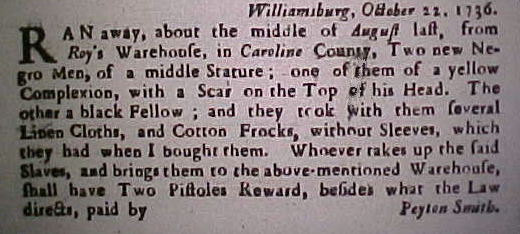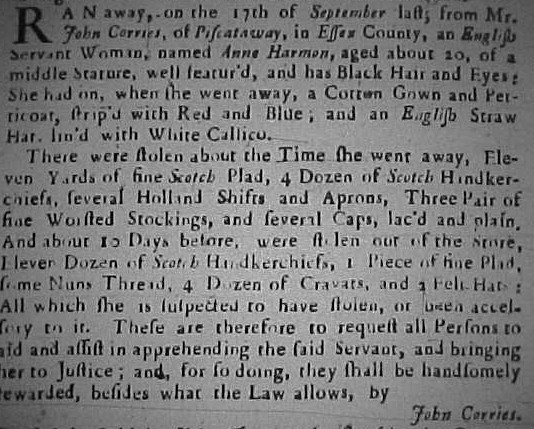Dr Darren Reid of the University of Dundee is running an series of seminars over Skype on
Atlantic History and in his fifth (and final) seminar he has asked us to look at two important documents and compare them.
The first document which I shall look at is the Declaration of Independence.
The Declaration of Independence
Rather than go into a great deal of detail as to the content of the Declaration of Independence, rather than presenting the text here as a whole I intend to summarise it and then present one section in more detail.
You can view the entire document online, and I would recommend doing so (should you be so inclined).
The opening paragraph attempts to offer justification for the document, explaining why those who put their signature to the document thought it was right to do so.
The second paragraph, starts with these famous words:
"We hold these truths to be self-evident, that all men are created equal, that they are endowed by their Creator with certain unalienable Rights, that among these are Life, Liberty and the pursuit of Happiness..."
It then goes on to examine what rights are (or should be) afforded to all people, and what steps should be taken when they are not. I will come back to this section in a short while.
The third paragraph would perhaps be more properly be shown as a bullet pointed list in a modern document but lists a long and emotive series of wrongs done to the fine people of the 13 colonies by order of King George III (or, perhaps, more properly by his government). This is a long list with 27 separate items, starting and ending with:
"He has refused his Assent to Laws, the most wholesome and necessary for the public good...
"He has excited domestic insurrections amongst us, and has endeavoured to bring on the inhabitants of our frontiers, the merciless Indian Savages, whose known rule of warfare, is an undistinguished destruction of all ages, sexes and conditions."
Following this the writers of the document assure the reader that they have done all in their power to seek relief from the injustices listed, something that has clearly demonstrated that the rule of George III is unsuitable in the extreme.
"In every stage of these Oppressions We have Petitioned for Redress in the most humble terms: Our repeated Petitions have been answered only by repeated injury. A Prince whose character is thus marked by every act which may define a Tyrant, is unfit to be the ruler of a free people."
In the penultimate paragraph the declaration lists what steps have been taken to appeal to the British people, to warn them and to appeal to them, and noting that their words have fallen upon deaf ears. The final paragraph then states clearly that the political and legal relationship between the 13 colonies and Great Britain are no longer, that the two are now and forevermore separate, and that the United States of America is born.
Self-evident truths
Whilst the entirety of the Declaration of Independence is powerful with words well-chosen to ring through the centuries, written for the world and for history by educated and intelligent men, the second paragraph of the document has surely some of the most potent and well known words ever written in English.
"We hold these truths to be self-evident, that all men are created equal, that they are endowed by their Creator with certain unalienable Rights, that among these are Life, Liberty and the pursuit of Happiness.--That to secure these rights, Governments are instituted among Men, deriving their just powers from the consent of the governed, --That whenever any Form of Government becomes destructive of these ends, it is the Right of the People to alter or to abolish it, and to institute new Government, laying its foundation on such principles and organizing its powers in such form, as to them shall seem most likely to effect their Safety and Happiness. Prudence, indeed, will dictate that Governments long established should not be changed for light and transient causes; and accordingly all experience hath shewn, that mankind are more disposed to suffer, while evils are sufferable, than to right themselves by abolishing the forms to which they are accustomed. But when a long train of abuses and usurpations, pursuing invariably the same Object evinces a design to reduce them under absolute Despotism, it is their right, it is their duty, to throw off such Government, and to provide new Guards for their future security.--Such has been the patient sufferance of these Colonies; and such is now the necessity which constrains them to alter their former Systems of Government. The history of the present King of Great Britain is a history of repeated injuries and usurpations, all having in direct object the establishment of an absolute Tyranny over these States. To prove this, let Facts be submitted to a candid world."
I shall break this important paragraph down further, smaller sections.
"We hold these truths to be self-evident, that all men are created equal, that they are endowed by their Creator with certain unalienable Rights, that among these are Life, Liberty and the pursuit of Happiness."
The authors of the Declaration of Independence clearly present the rights of man, these "
unalienable Rights", as the basis of their moral right to separate the 13 Colonies from Great Britain. "
Life, Liberty and the pursuit of Happiness." Powerful, emotive, stuff indeed.
"That to secure these rights, Governments are instituted among Men, deriving their just powers from the consent of the governed, --That whenever any Form of Government becomes destructive of these ends, it is the Right of the People to alter or to abolish it, and to institute new Government, laying its foundation on such principles and organizing its powers in such form, as to them shall seem most likely to effect their Safety and Happiness."
Next the authors state the case that government should exist for the people rather than the people existing to be governed. This continues in the next part of this second paragraph.
"Prudence, indeed, will dictate that Governments long established should not be changed for light and transient causes; and accordingly all experience hath shewn, that mankind are more disposed to suffer, while evils are sufferable, than to right themselves by abolishing the forms to which they are accustomed. But when a long train of abuses and usurpations, pursuing invariably the same Object evinces a design to reduce them under absolute Despotism, it is their right, it is their duty, to throw off such Government, and to provide new Guards for their future security."
In fact that next section goes further, outlining the duty of a citizen to overthrow an oppressive government, a government which does not exist for the benefit of those it governs but for its own benefit.
Such has been the patient sufferance of these Colonies; and such is now the necessity which constrains them to alter their former Systems of Government. The history of the present King of Great Britain is a history of repeated injuries and usurpations, all having in direct object the establishment of an absolute Tyranny over these States. To prove this, let Facts be submitted to a candid world."
Finally the authors present the end of the circle - that the purpose of government is to help those it governs enjoy these unalienable Rights but that when it does not do this, when instead it oppresses its people and prevents these universal rights from being employed it is then the duty of a citizen to resist and to oppose the oppressive government (in this case "The history of the present King of Great Britain is a history of repeated injuries and usurpations, all having in direct object the establishment of an absolute Tyranny over these States")
In conclusion then
The Declaration of Independence is a very well written and emotive piece which still bears a great deal of power many years after it was signed. It's a public document, designed to sway public opinion. It's a very fine example of propaganda and despite slightly archaic language can still stir the blood of someone who is, frankly, disinclined towards republicanism.
It may well be argued that the most important part of the entire document is where the (presumably) honest feelings of the authors are represented as they present what are felt to be the underlying rights of man, the founding principles of the new nation of the United States of America;
"We hold these truths to be self-evident, that all men are created equal, that they are endowed by their Creator with certain unalienable Rights, that among these are Life, Liberty and the pursuit of Happiness"
Can there be a single more powerful, more important, or better known sentence written in the English language? Even as a non-American I know it, as do countless others across the globe. It's echoes ring through the corridors of history, and long may they do so.




